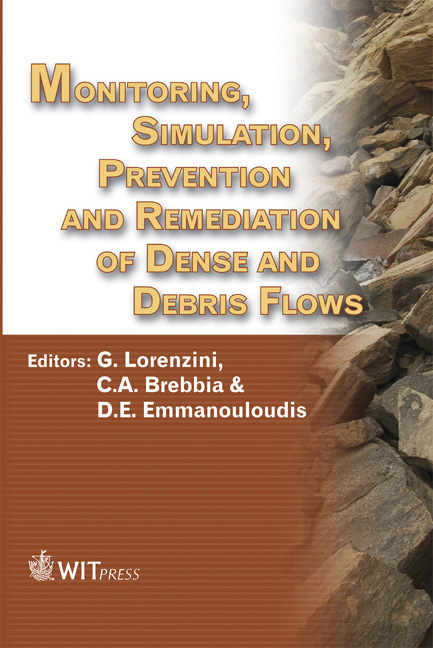Application Of The ALE FE Method To Debris Flows
Price
Free (open access)
Transaction
Volume
90
Pages
11
Published
2006
Size
2,565 kb
Paper DOI
10.2495/DEB060051
Copyright
WIT Press
Author(s)
I. Konuk, S. Yu & E. Evgin
Abstract
A computational model illustrating the application of the ALE FE method to simulate three dimensional debris flows is presented. The paper studies the influence of the initial and boundary conditions on the dynamics of the debris flows on simplified terrain geometry. The effects of the loading conditions and soil properties are also illustrated. The paper demonstrates the applicability and versatility of the ALE method for the debris flow problem while satisfying all the principles of continuum mechanics. Keywords: debris flow, finite element, ALE, computational geomechanics. 1 Introduction Debris flows are fast moving landslides. They can happen on land or on submarine slopes. They may consist of a mixture of soils, fragments of rock, and water. Debris flows can also travel several miles from their source. As they move, they can grow in size as they may pick up additional material or may trigger larger flows. Large submarine flows were reported off the east coast of Canada and west coast of Norway. One extensively studied submarine slide in Norway involved about 6000 km 3 of soil [1]. Engineers face the task of predicting the volume, velocity of the debris flows as well as the distances they may travel and the magnitudes of forces that they would exert on structures located on their path. The debris flows may be initiated by various forms of instabilities on sloping ground caused by heavy rainfall, rapid snowmelt, earthquake shaking, sediment accumulation, or volcanic eruptions. Limit equilibrium, finite element (FE), and finite difference methods are used to determine the conditions that may initiate a
Keywords
debris flow, finite element, ALE, computational geomechanics.





